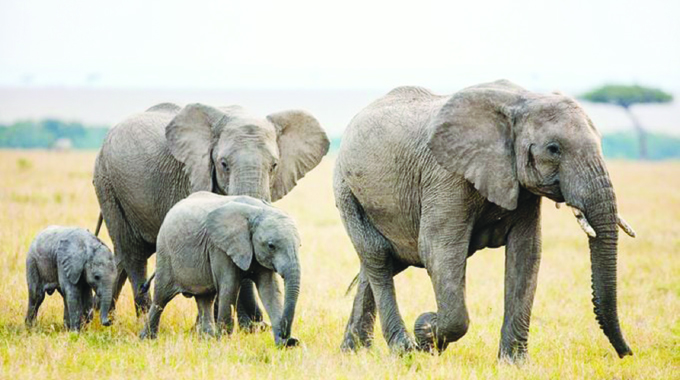Sadc meets resistance to proposals on communities, wildlife trade

Countries in the Southern African Development Community (SADC) are pushing to incorporate rural communities and their livelihoods in decisions about the international trade of wildlife.
While they have met resistance to their proposals from other countries, SADC governments have showcased how working alongside their communities can achieve conservation and sustainable development goals.
Community representatives from Southern Africa who attended CITES made interventions in support of their governments’ position. Botswana, Eswatini, Namibia, South Africa, Tanzania, Zambia and Zimbabwe have been especially vocal proponents of including rural communities in decisions about global trade of wildlife.
These countries jointly proposed and supported the greater participation of rural communities during the 19th Meeting of the Conference of the Parties (CoP19) of the Convention of International Trade on Endangered Species of Flora and Fauna (CITES) recently held in Panama City.
These parties used the United Nations Declarations on the Rights of Indigenous People (UNDRIP) and Peasants and Other People Working in Rural Areas (UNDROP) as a basis for their argument to include the views of communities in CITES decisions.
One of their most powerful assertions was that CITES is lagging on this issue relative to other multi-lateral conventions on the environment.
For example, the UN Convention on Biological Diversity (CBD) and the UN Framework Convention on Climate Change (UNFCCC) have mechanisms for local communities to participate in their deliberations. Community representatives from these Southern African countries attended the debates during CoP19 and made several interventions on subjects that affect them.
They also co-hosted and attended side events that demonstrated why their government’s proposals were important and how including the views and perspectives of communities could improve the state of biodiversity.
These communities work together to present their views under the auspices of the Community Leaders Network of Southern Africa (CLN).
Prior to CoP19, the CLN collaborated with the Africa CSOs Biodiversity Alliance (ACBA) to produce a position paper supporting the proposals relating to communities and livelihoods.
CLN alongside their partners Resource Africa and ACBA emphasised that nature conservation must involve people and their livelihoods to be successful and sustainable.
It is not an accident that the countries that submitted and supported these proposals also have national programmes for community-based natural resource management (CBNRM), which puts people at the centre of conservation.
During CoP19, Parties (countries that have signed the convention) decided on numerous matters relating to the trade in over 600 wild plants and animals.
Some of these involve the regulation of trade in species of concern – placing a species on Appendix II introduces permit procedures to track the trade and some restrictions on the purpose of the trade, while Appendix I prevents all commercial trade.
Other decisions involve procedures on how CITES itself functions and makes decisions, either related to particular species such as monitoring illegal killing of elephants or across all species. This year, Southern African Parties proposed two key documents regarding how CITES works. The first document proposed including representatives of rural communities worldwide on an advisory committee that would provide input on all future CITES proposals.
Environment, Climate Change, Tourism and International Trade Minister Mangaliso Ndlovu stated: “CITES is turning 50, and yet it still does not have a mechanism to include local communities and livelihoods. CITES decisions should take into account the livelihoods of the poor, but the key question is how?”
Minister Ndlovu strongly believes that rural communities are the key to tackling illegal wildlife trade, which is a major challenge to the implementation of CITES. The second document proposed including considerations relating to community livelihoods in CITES decisions.
Minister of Environment, Natural Resources Conservation and Tourism in Botswana, Philda Kereng explained, “If you look at the communities in the KAZA (Kavango-Zambezi) region, you will see how the elephants destroy livelihoods and even kill people. We need to find a way for people to receive benefits from this wildlife. We need their voluntary contributions for conservation to work, so we need to work with them and deliver benefits to them.”
Minister Kereng emphasised the need for people-centred conservation approaches that support the livelihoods of rural communities and thus include them in the fight against wildlife crime.
Minister of Tourism and Arts in Zambia, Rodney Sikumba supported the Southern African position as the current Chair of the KAZA Trans-frontier Conservation Area.
“In Zambia, we have Game Management Areas that function as buffer areas around our national parks, and our communities living in these areas are viewed as our partners in conservation,” he said.
He further noted, “These communities need a seat at the table to help make decisions and ensure that they derive benefits from their natural resources.”
CBNRM actively involves communities in decisions about their wildlife and aims to supplement rural livelihoods through the sustainable use of natural resources.
This management system has resulted in reduced poaching and stable or increasing wildlife populations across the region. By bringing communities into CITES, Southern Africa was suggesting that the international convention could learn from their experiences at the national level.
Unfortunately, they met resistance to these proposals from other CITES Parties. Some countries argued that they represented their communities at CITES and there was no need to include them in decision-making at this level.
Others were concerned that considering livelihoods in CITES decisions would divert focus away from the conservation of plants and animals.
Yet most of those standing against these proposals cannot boast the same conservation success as Southern Africa; perhaps they could learn something from SADC countries?
During this CoP, Southern Africa had shown that it is serious about community-based conservation in a number of ways.
Ministers and top environmental officials from SADC co-hosted and contributed to side events alongside their communities to showcase their proposals and help other Parties understand how conservation works in this region.
Botswana funded the attendance of Community Trusts at CITES and South Africa included communities in its government delegation, which is highly commendable. Community representatives attending the CoP supported their governments’ proposals by making statements whenever possible.
CLN and the Zambian Community-based Natural Resources Management Forum representative, Dr Rodgers Lubilo stated: “Our communities may not have political power, but they live with wildlife on a daily basis. Ultimately, we decide the fate of wildlife. We want a positive outcome. Therefore we would like to discuss more about the benefits of legal trade than illegal trade.”
Similarly, Ngamiland Council of Non-Governmental Organisations (NCONGO) representative Ditiro Mmerek made an intervention during CoP19 saying, “It is time for CITES to include the views and perspectives of rural communities. We cannot just keep speaking about it; we need some concrete actions and way forward.”
During the final plenary session, Dr Lubilo expressed his gratitude, “We would like to thank our countries from Southern Africa, especially for their persistent call that community involvement is critical to conservation. We would like to invite our friends from all over the world who have not had the opportunity to work with communities to come to Southern Africa. Wildlife populations are thriving in Southern Africa because our governments have put communities at the centre of conservation.”
Although the SADC proposals on communities and livelihoods had not been adopted outright during CoP19, there remain some ways forward.
Two other proposals were adopted during CoP19 on these matters, which allow CITES Parties and observers to join working groups that will examine community inclusion and livelihoods before the next CoP.
The SADC governments and community representatives all volunteered to be part of these working groups and bring their ideas to the table.
The governments and communities of Southern Africa thus showed a united front during CoP19. They are standing for the role of communities in conservation and their rights to sustainably use and trade plants and animals in a way that supports their livelihoods. This joint effort and solidarity gives us hope that other countries will realise the benefits of including communities in global discussions about conservation and wildlife trade.
This statement was jointly issues by Community Leaders Network (CLN), Resource Africa and CSOs Biodiversity Alliance (ACBA)









Comments